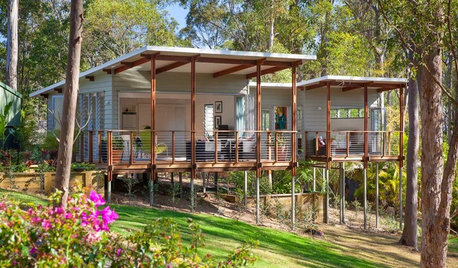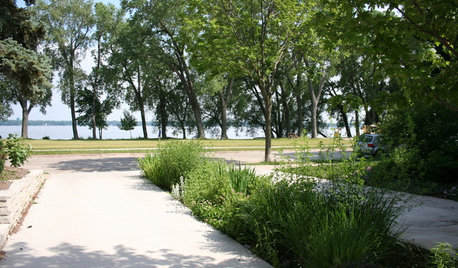Raised Beds vs Improving the Ground?
iam3killerbs
14 years ago
Related Stories

FARM YOUR YARDHow to Build a Raised Bed for Your Veggies and Plants
Whether you’re farming your parking strip or beautifying your backyard, a planting box you make yourself can come in mighty handy
Full Story
GROUND COVERSGround Force: 10 Top Ground Covers for Your Garden
Protect your soil from weeds and drought this summer with a living mulch of ground covers
Full Story
ARCHITECTUREStilt Houses: 10 Reasons to Get Your House Off the Ground
Here are 10 homes that raise the stakes, plus advice on when you might want to do the same
Full Story
GARDENING AND LANDSCAPINGBuild a Raised Bed to Elevate Your Garden
A bounty of homegrown vegetables is easier than you think with a DIY raised garden bed to house just the right mix of soils
Full Story
GARDENING GUIDES8 Materials for Raised Garden Beds
Get the dirt on classic and new options for raised vegetable and plant beds, to get the most from your year-round garden
Full Story
SPRING GARDENINGInspiring Raised Beds for Fall and Spring Planting
Make Your Next Vegetable Garden Even Better with Beautiful Boxes and Paths
Full Story
GREEN BUILDINGThe Big Freeze: Inventors Break New Ground to Keep Things Cool
Old-fashioned fridges can be energy guzzlers, but there are more eco-friendly ways of keeping food fresh, as these global innovations show
Full Story
LANDSCAPE DESIGNHow to Design Your Landscape to Sink Water Into the Ground
Learn to infiltrate stormwater, even on challenging sites
Full Story
GREAT HOME PROJECTSHow to Replace Your Lawn With a Garden
New project for a new year: Lose the turfgrass for energy savings, wildlife friendliness and lower maintenance
Full Story
LIFEImprove Your Love Life With a Romance-Ready Bedroom
Frank talk alert: Intimacy and your bedroom setup go hand in hand, says a clinical sexologist. Here's her advice for an alluring design
Full StoryMore Discussions







cantstopgardening
iam3killerbsOriginal Author
Related Professionals
Eden Prairie Landscape Architects & Landscape Designers · Taylorsville Landscape Architects & Landscape Designers · Maple Heights Landscape Architects & Landscape Designers · Pottstown Landscape Contractors · Lemoore Landscape Contractors · McLean Landscape Contractors · Palatine Landscape Contractors · Uxbridge Landscape Contractors · Washington Landscape Contractors · West Allis Landscape Contractors · Eastlake Landscape Contractors · Columbia Decks, Patios & Outdoor Enclosures · Conroe Decks, Patios & Outdoor Enclosures · Del Aire Decks, Patios & Outdoor Enclosures · Palm Beach Gardens Decks, Patios & Outdoor EnclosuresKimmsr
leira
gardenlen
iam3killerbsOriginal Author
bpgreen
jeremyjs
iam3killerbsOriginal Author
Dan _Staley (5b Sunset 2B AHS 7)
elphaba_gw
heather38
heather38
shebear
belindach
gardenlen
joe.jr317
iam3killerbsOriginal Author
ausbirch
leira
cantstopgardening
petalpatsy
ottawan_z5a
iam3killerbsOriginal Author
lazy_gardens
treebarb Z5 Denver
gardener_mary
swanz
jonas302
Dan _Staley (5b Sunset 2B AHS 7)
iam3killerbsOriginal Author
swanz
karen_florida
iam3killerbsOriginal Author
jolj
goudananda
gooseberryfool
jolj
gooseberryfool